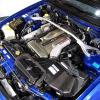Jap Tyres And Compliance...
Announcements
-
Similar Content
-
Latest Posts
-
By TurboTapin · Posted
Out of curiosity, I believe the title of "Engineer" is not protected in Australia like it is over here. I'm curious, does Australia actually have professional engineers do vehicle inspections? If so, Jesus Christ what in the f**k. -
When it’s broken I take one of my other r33s out its a little more reliable
-
By DraftySquash · Posted
I think a 60-90 mins drive is worth it, if the mechanic is good and has experience. that’s what I’ve heard about CMS, so I’ll let you know how I go after Monday -
By DraftySquash · Posted
lol I know!! I’m actually staying over at a mate’s place in SE the night before. not because I don’t like the long drive. I just don’t want to drive from West to Seaford around 8am on a Monday 😂 traffic would be wild. The Skyline actually does the West to SE trip without issues. My family is on that side.
-








Recommended Posts